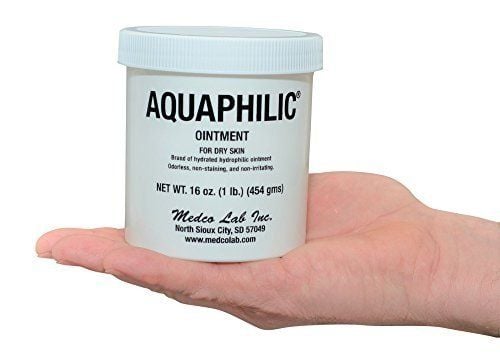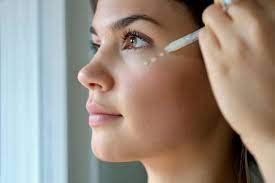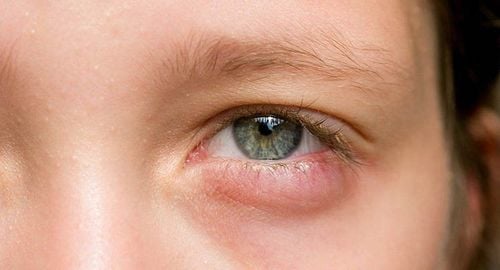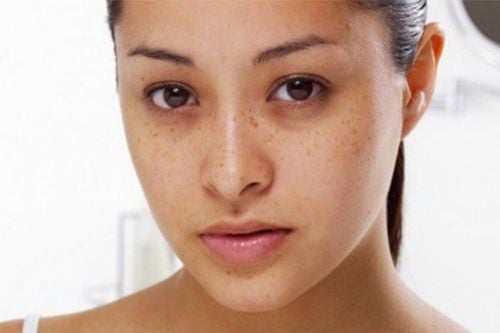This is an automatically translated article.
Sagging skin under the eyes, causing puffiness, is a concern for many people, especially in the elderly. In medicine, this condition is known as edema under the eyes. Wrinkled, sagging skin under the eyes not only affects aesthetics but also interferes with daily activities. This article will cover some remedies for wrinkles under the eyes.1. Characteristics of the skin under the eyes
As the body begins to age, the skin loses its elasticity. Environmental factors, most notably the sun, in combination with genetic traits play an important role in determining when facial wrinkles appear.The skin under the eyes is an area that shows signs of aging earlier than other areas. The cause of this condition is that the skin tissue under the eyes has a thin structure with rich blood vessels.
Sagging skin under the eyes is a normal part of getting older. This is a benign condition that does not require immediate medical treatment. If wrinkled skin around your eyes is a cause for concern, here are ways to prevent them and some home remedies.
2. What causes the skin under the eyes to be wrinkled?
Sagging skin under the eyes can create an undesirable appearance. The most common cause is the natural aging process. Fat tissue above the eyes moves downward, excess fluid accumulation in the skin under the eyes, aging muscles under the eyes, thinner skin under the eyes are all factors that are likely to form wrinkles in the eyes. under eyes. These are the causes that are difficult to prevent. In addition, genetic characteristics are also an irreversible cause of sagging skin under the eyes. Some people in the same family have a higher risk of developing wrinkles than others, possibly because they share similar facial features. However, a number of other environmental factors contribute to the faster but preventable appearance of wrinkles under the eyes, including:Ultraviolet radiation : Ultraviolet (UV) rays are harmful to the skin because they have the ability to break down the collagen structure in the skin. Collagen is the main protein in skin tissue and is the key to firm, youthful skin. Ultraviolet rays act on the skin through direct unprotected exposure to the sun, as well as the abuse of sunbeds without sun. According to the U.S. Food and Drug Administration (FDA), unprotected UV exposure leads to an earlier appearance of wrinkles on the skin, including under the eyes. saggy. Smoking: The Mayo Clinic reports that in addition to age, smoking is the strongest predictor of wrinkles in both women and men. Smoking puts extra pressure on the skin from oxidants, damaging the structural system of collagen and elastin. Smoking also constricts blood vessels in the face, impeding circulation to the skin and depleting vitamin A. Repetitive gestures and movements: Facial expressions, such as smiling, frowning, and frowning, can cause wrinkles on your face. Even your sleeping habits can cause wrinkles if your facial muscles are pressed against your pillow when you sleep at night. The skin gradually loses its elasticity over time, meaning the skin is not able to return to its original state. Research shows that sleeping with your face in a pillow can contribute to wrinkles in the skin under your eyes. In most cases, sagging skin under the eyes is a cosmetic concern that is not indicative of any health problems. However, people should see a doctor if the lower eye area is itchy, red or painful, or changes color suddenly. This could be a sign of an allergic reaction or some other medical condition that needs to be treated.
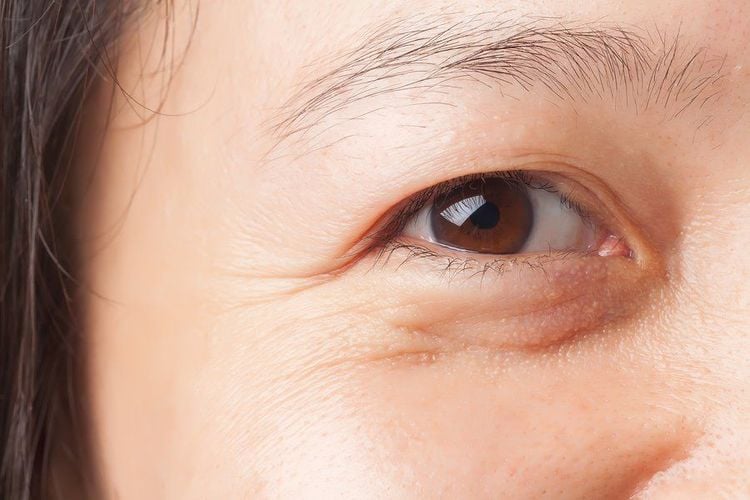
Quá trình lão hoá làm da chảy xệ, xuất hiện bọng mắt
3. Support measures at home
While sagging skin under the eyes is not usually a medical concern, their appearance can be bothersome. Some people tend to experience severe dark circles under the eyes, which can cause emotional stress and insecurity. They may not be completely eliminated with home remedies, but certain home treatments and skin care products can reduce the appearance of wrinkles under the eyes and improve the look of them. your exterior.Try exercises to tighten facial skin: Several facial exercises have been shown to be effective in tightening the skin under the eyes. There is no reason to believe that these exercises are harmful, but the research evidence for their exact benefits is still very limited. Treat allergic conditions: Allergic reactions often cause inflammation around the eyes. They can also lead to increased tear production and itchy eyes. Rubbing or scratching your eyes due to allergy symptoms can contribute to red eyes and make your skin feel dry. Treating allergy symptoms can give your face a more relaxed appearance, and it can also protect the skin under your eyes in the long run. Gently Exfoliate You can gently exfoliate the dry skin under your eyes to promote new cell growth. Note that you should only use products specifically made for exfoliating and massaging the skin under the eyes. Your eyes are extremely sensitive to chemicals. Do not damage your eyes or impair vision by using products not intended for use in that area. Moisturize with an eye cream: Lack of moisture can increase the appearance of fine lines around the eyes. Look for moisturizers that are rich in ingredients that promote circulation and new cell growth. Retinol (a derivative of vitamin A), peptides and hyaluronic acid are all backed by researchers and estheticians. Under-eye products in the form of cooling gels and serums may be best suited to combat wrinkles. Remember that applying the same moisturizer you use to both your face and the skin under your eyes can irritate your eyes. The creams you use on the rest of your body are too thick to be absorbed by the skin under your eyes, which is prone to irritation. Avoid sun exposure - use sunscreen and wear a hat You can help prevent wrinkles from forming by protecting your skin from UV rays. Always use a sunscreen with an SPF of at least 30 when you're outdoors, even if it's not particularly sunny. When you are exposed to direct sunlight for several hours at a time, consider covering your eyes with a hat as well as wearing sunglasses. Hats and visors offer an additional benefit to your eyes: They keep you from squinting, a expression that can create wrinkles when repeated often enough. Protect your skin with the right sunscreen. Build a healthy diet: Vitamin C, vitamin A and vitamin E are all used frequently in skin care products. By incorporating foods rich in these vitamins into your diet, you'll be helping your skin (and the rest of your body) form healthy new cells. Some researchers suggest that there is a strong link between a healthy diet and a firm, youthful skin. Consider colorful citrus fruits, carrots, and squash to increase the amount of this vitamin in your diet. While genetics cannot be changed and aging is inevitable, following a healthy lifestyle and taking care of your skin can help keep the eye area looking its best.

Xây dựng chế độ ăn lành mạnh có thể giúp bạn cải thiện sự chảy xệ, nhăn ở vùng da dưới mắt
4. Aesthetic treatments
Many dermatologists and plastic surgeons now offer treatments for sagging skin under the eyes, which can reduce their appearance or eliminate them altogether. Depending on the skin type, age and lifestyle of each person, the following treatment options can be considered:Chemical peels: This method can be applied to the face to remove the dead skin cells and promotes the growth of new cell layers. Chemical peels cannot treat deep wrinkles or tighten already sagging skin, but they can reduce the appearance of wrinkles under your eyes. Fillers: Dermal fillers or fillers are injected into the skin under or around the eyes to "fill in" sagging skin. Fillers are only a temporary fix and most products give you results that last six months to two years. Microdermabrasion: This is a common and minimally invasive procedure used to exfoliate the skin. Diamond-tipped hand tools are commonly used on sensitive skin areas, such as eyes, for treatment. Microdermabrasion helps remove dull dead skin cells and promotes circulation to wrinkled skin. Laser: Lasers are becoming increasingly popular as a treatment for wrinkles, especially wrinkles under the eyes. There are different laser treatments for wrinkles under the eyes. Fractional lasers are one of the popular options, which work by poking microscopic holes into the skin to stimulate collagen and elastin production. Microneedling: An increasingly popular treatment to reduce the appearance of fine lines and wrinkles. In this procedure, microscopic needles are used to poke holes in the skin, which can then be applied with a lotion or serum. As the skin heals, collagen is stimulated, improving wrinkles and skin texture. Botox: A small amount of Botox is injected into the muscles under the eyes, thereby reducing the appearance of wrinkles by relaxing the area. According to the American Academy of Dermatology (AAD), most people see results in just three to seven days and significantly reduce the appearance of wrinkles in three to four months.
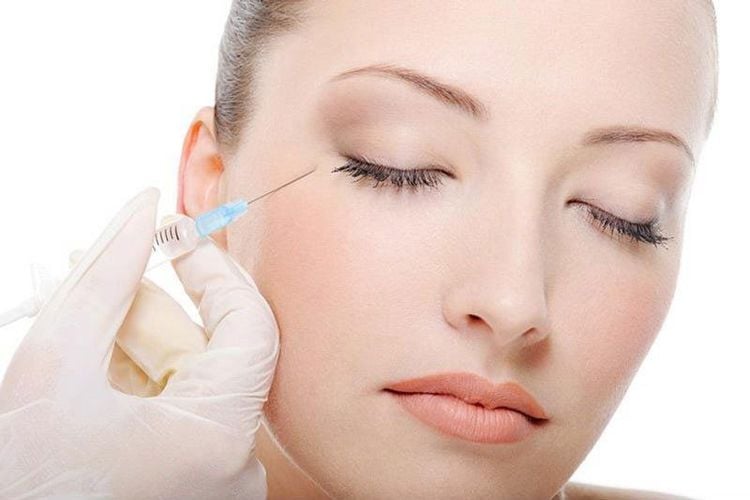
Tiêm botox là một trong những phương pháp giúp cải thiện vùng da dưới mắt bị nhăn
Please dial HOTLINE for more information or register for an appointment HERE. Download MyVinmec app to make appointments faster and to manage your bookings easily.
Reference source: healthline.com




